Hyundai IONIQ 5 vs Volvo V60 – Differences & prices compared
Compare performance, boot capacity, efficiency and price at a glance.
Find out which car is the better choice for you – Hyundai IONIQ 5 or Volvo V60?
Costs and Efficiency:
Looking at overall running costs, both models reveal some interesting differences in everyday economy.
Hyundai IONIQ 5 has a barely noticeable advantage in terms of price – it starts at 38500 £, while the Volvo V60 costs 41600 £. That’s a price difference of around 3163 £.
As for range, the Hyundai IONIQ 5 performs decisively better – achieving up to 570 km, about 478 km more than the Volvo V60.
Engine and Performance:
Power, torque and acceleration say a lot about how a car feels on the road. This is where you see which model delivers more driving dynamics.
When it comes to engine power, the Hyundai IONIQ 5 has a distinct edge – offering 650 HP compared to 455 HP. That’s roughly 195 HP more horsepower.
In acceleration from 0 to 100 km/h, the Hyundai IONIQ 5 is evident quicker – completing the sprint in 3.50 s, while the Volvo V60 takes 4.60 s. That’s about 1.10 s faster.
In terms of top speed, the Hyundai IONIQ 5 performs clearly perceptible better – reaching 260 km/h, while the Volvo V60 tops out at 180 km/h. The difference is around 80 km/h.
There’s also a difference in torque: Hyundai IONIQ 5 pulls hardly perceptible stronger with 770 Nm compared to 709 Nm. That’s about 61 Nm difference.
Space and Everyday Use:
Cabin size, boot volume and payload all play a role in everyday practicality. Here, comfort and flexibility make the difference.
Both vehicles offer seating for 5 people.
In curb weight, Volvo V60 is to a small extent lighter – 1734 kg compared to 1955 kg. The difference is around 221 kg.
In terms of boot space, the Hyundai IONIQ 5 offers hardly perceptible more room – 520 L compared to 519 L. That’s a difference of about 1 L.
In maximum load capacity, the Hyundai IONIQ 5 performs barely noticeable better – up to 1580 L, which is about 149 L more than the Volvo V60.
When it comes to payload, Hyundai IONIQ 5 minimal takes the win – 530 kg compared to 506 kg. That’s a difference of about 24 kg.
Who wins the race?
The Hyundai IONIQ 5 proves to be outperforms in nearly all aspects and therefore becomes our DriveDuel Champion!
Hyundai IONIQ 5 is the better all-rounder in this comparison.
 @ hyundai.news
@ hyundai.news
Hyundai IONIQ 5
Hyundai IONIQ 5
The Hyundai IONIQ 5 showcases a bold and futuristic design that captures attention with its striking facade and sharp lines. This electric vehicle offers an impressive blend of performance and efficiency, making it a compelling choice for environmentally conscious drivers. Inside, the spacious and tech-forward interior provides a comfortable and engaging driving experience for both driver and passengers.
details @ hyundai.news
@ hyundai.news
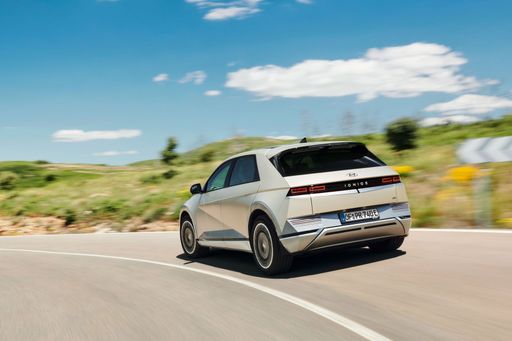 @ hyundai.news
@ hyundai.news
 @ hyundai.news
@ hyundai.news
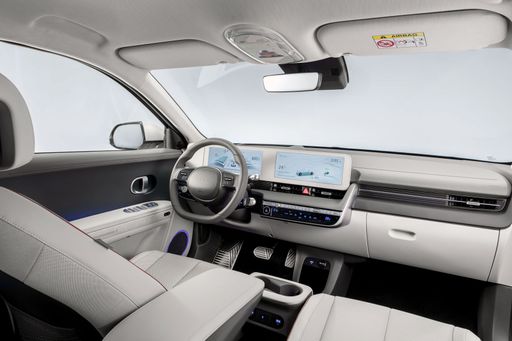 @ hyundai.news
@ hyundai.news
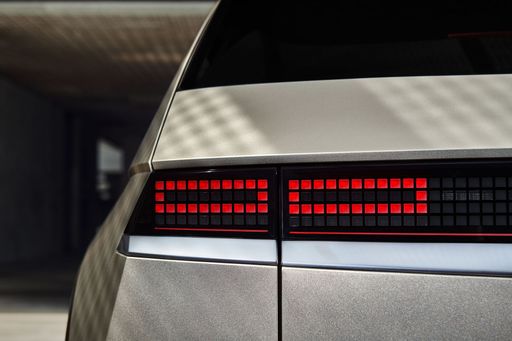 @ hyundai.news
@ hyundai.news
Volvo V60
The Volvo V60 exudes a sense of refined elegance with its sleek design and smooth contours, making it a standout in the estate car category. Inside, it offers a harmonious blend of luxury and functionality with premium materials and state-of-the-art technology, ensuring a comfortable driving experience. Its performance on the road is impressive, combining efficient handling with a powerful yet quiet ride, making it a favourite for those who appreciate both style and substance.
details @ media.volvocars.com
@ media.volvocars.com
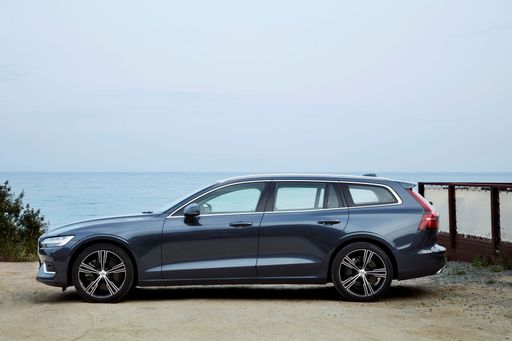 @ media.volvocars.com
@ media.volvocars.com
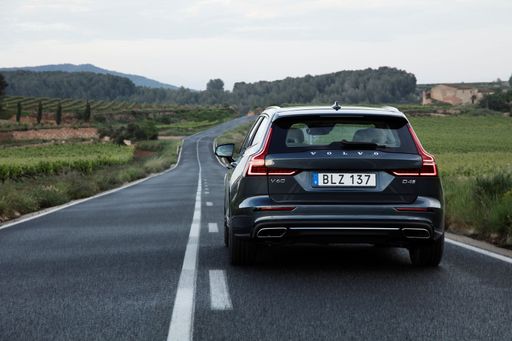 @ media.volvocars.com
@ media.volvocars.com
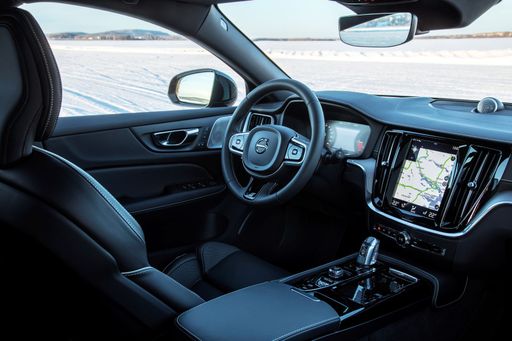 @ media.volvocars.com
@ media.volvocars.com
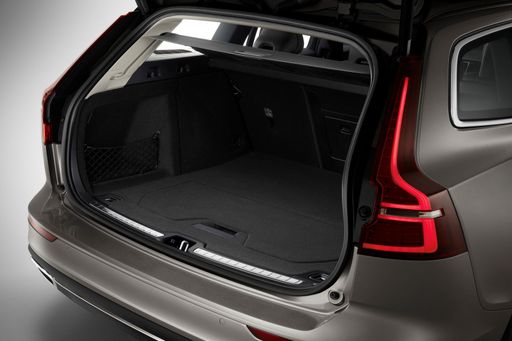 @ media.volvocars.com
@ media.volvocars.com
 @ hyundai.news
@ hyundai.news
|
 @ media.volvocars.com
@ media.volvocars.com
|
|
|
|
Costs and Consumption |
|
|---|---|
|
Price
38500 - 64200 £
|
Price
41600 - 64200 £
|
|
Consumption L/100km
-
|
Consumption L/100km
2.4 - 6.2 L
|
|
Consumption kWh/100km
15.6 - 21.2 kWh
|
Consumption kWh/100km
-
|
|
Electric Range
440 - 570 km
|
Electric Range
92 km
|
|
Battery Capacity
63 - 84 kWh
|
Battery Capacity
14.70 kWh
|
|
co2
0 g/km
|
co2
54 - 140 g/km
|
|
Fuel tank capacity
-
|
Fuel tank capacity
60 L
|
Dimensions and Body |
|
|---|---|
|
Body Type
SUV
|
Body Type
Estate
|
|
Seats
5
|
Seats
5
|
|
Doors
5
|
Doors
5
|
|
Curb weight
1955 - 2275 kg
|
Curb weight
1734 - 2064 kg
|
|
Trunk capacity
480 - 520 L
|
Trunk capacity
519 L
|
|
Length
4655 - 4715 mm
|
Length
4778 mm
|
|
Width
1890 - 1940 mm
|
Width
1850 mm
|
|
Height
1585 - 1605 mm
|
Height
1432 mm
|
|
Max trunk capacity
1540 - 1580 L
|
Max trunk capacity
1431 L
|
|
Payload
385 - 530 kg
|
Payload
466 - 506 kg
|
Engine and Performance |
|
|---|---|
|
Engine Type
Electric
|
Engine Type
Petrol MHEV, Plugin Hybrid
|
|
Transmission
Automatic
|
Transmission
Automatic
|
|
Transmission Detail
Reduction Gearbox
|
Transmission Detail
Dual-Clutch Automatic, Automatic Gearbox
|
|
Drive Type
Rear-Wheel Drive, All-Wheel Drive
|
Drive Type
Front-Wheel Drive, All-Wheel Drive
|
|
Power HP
170 - 650 HP
|
Power HP
197 - 455 HP
|
|
Acceleration 0-100km/h
3.5 - 8.5 s
|
Acceleration 0-100km/h
4.6 - 7.6 s
|
|
Max Speed
185 - 260 km/h
|
Max Speed
180 km/h
|
|
Torque
350 - 770 Nm
|
Torque
300 - 709 Nm
|
|
Number of Cylinders
-
|
Number of Cylinders
4
|
|
Power kW
125 - 478 kW
|
Power kW
145 - 335 kW
|
|
Engine capacity
-
|
Engine capacity
1969 cm3
|
General |
|
|---|---|
|
Model Year
2024
|
Model Year
2024 - 2025
|
|
CO2 Efficiency Class
A
|
CO2 Efficiency Class
E, B
|
|
Brand
Hyundai
|
Brand
Volvo
|
What drive types are available for the Hyundai IONIQ 5?
The Hyundai IONIQ 5 is available as Rear-Wheel Drive or All-Wheel Drive.
The prices and data displayed are estimates based on German list prices and may vary by country. This information is not legally binding.
